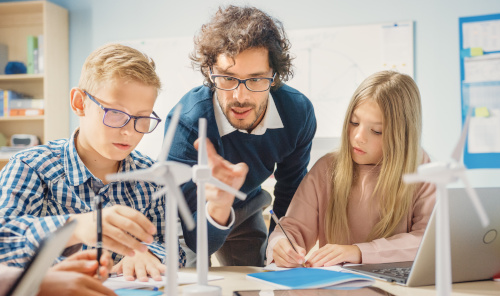
Too often, the focus of education is not the actual use of knowledge and material but rather a memorize and repeat model.
It is an archaic formula that stems from a time when students were required to simply sit and listen–and it is poor preparation for the modern world. Today’s students need to be exposed to working environments that foster collaboration, communication, and community. Higher education and the workforce do this well. However, schools and teachers need to foster that same collaboration in K-12 education to better prepare students for their futures.
One way to do this is for educators to incorporate real-world examples into their teaching. Real-world examples bring something more tangible, impactful, and real to the curriculum, and students become more interested and engaged when they see how their lessons apply to their daily lives. They also promote a more critical and holistic way of thinking. After all, life is often more complex than what is presented in the classroom.
How do you bring the real world to the classroom? Here are four tips:
1. Incorporate current events into lessons as real-world examples. By using current events, students build connections between the real world and the classroom and increase their awareness of cultural, social, and political perspectives they may not otherwise be exposed to.

